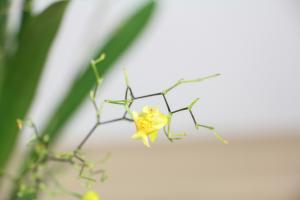Introduction
Plants release water to the atmosphere through a process called transpiration. This is an important process for the plants as it allows them to take up nutrients from the soil and carry them to different parts of the plant. Transpiration also plays an important role in the water cycle by providing water vapor to the atmosphere, which can then condense and form rain. In this article, we will explore the process of transpiration and how it enables plants to release water into the atmosphere.
Anatomy of a Plant
To understand how plants release water into the atmosphere through transpiration, we must first understand the anatomy of a plant. The main structures involved in transpiration are the roots, stem, and leaves. The roots absorb water and nutrients from the soil, which are then transported up through the stem to the leaves. Once in the leaves, the water is released into the atmosphere through tiny pores on the surface of the leaves called stomata.
Transpiration
Transpiration is the process by which plants release water into the atmosphere through the stomata. This process is driven by a combination of factors, including the movement of water through the plant, humidity levels, and temperature. As water moves up through the plant from the roots to the leaves, it is under tension, which creates a suction that pulls water out of the stomata.
Factors Affecting Transpiration
Several factors can affect the rate at which transpiration occurs in plants. These factors include humidity, temperature, wind, and light intensity. Humidity levels play a crucial role in transpiration, as high humidity can reduce the rate of water loss from the plant. Conversely, dry air can increase the rate of transpiration, as the plant responds by opening its stomata wider to release more water.
Temperature is another important factor in transpiration, as warmer temperatures can increase the rate of transpiration. This is because the warmer air can hold more water vapor, creating a gradient that draws water out of the plant. Wind can also play a role in transpiration, as it can carry away water vapor from around the plant, creating a drier environment that can increase the rate of water loss. Finally, light intensity can affect transpiration by stimulating the opening of the stomata, allowing the plant to release more water into the atmosphere.
Conclusion
Transpiration is a vital process for plants, allowing them to take up nutrients from the soil and transport them to different parts of the plant. It also plays an important role in the water cycle by providing water vapor to the atmosphere, which can then condense and form rain. By understanding how transpiration works and the factors that affect it, we can better appreciate the intricate relationship between plants and the environment.

 how many times do yo...
how many times do yo... how many planted tre...
how many planted tre... how many pine trees ...
how many pine trees ... how many pecan trees...
how many pecan trees... how many plants comp...
how many plants comp... how many plants can ...
how many plants can ... how many plants and ...
how many plants and ... how many pepper plan...
how many pepper plan...































